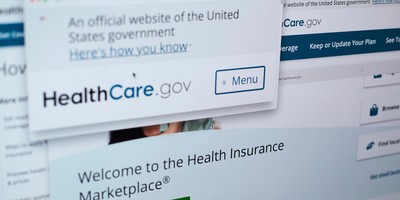Advertisement
Therein is the real story; this government's voracious appetite for spending means it must go after people that are decidedly middle income.
The way it will work is there will be an attack on taking away tax breaks for oil companies, breaks awarded to companies for hiring Americans, and other small potato taxes as cover. That cover or smokescreen will be just like the one that saw a fiscal cliff deal to take from the rich and smack everyone with higher taxes via the hike in payroll taxes. Also, keep in mind there was another big tax on families earning $300,000. The loss of personal exemptions of $3,800 per family member equals a 4.4 percentage point tax hike on a family with two children and 6.0% on a family with four children.
At the same time, according to Stephen Moore's piece in today's Wall Street Journal, Speaker Boehner has drawn a line in the sand on more tax hikes, flatly saying there will be no more during the next two years. Instead he plans to fight for spending cuts, perhaps focusing on the sequester as the battlefield is in a twist because everyone thought this was an area republicans would vigorously defend. There are many republicans that also want to use the debt ceiling as the backdrop for a more sensible approach to fixing the dark clouds on the horizon. While others think it's the continuing resolution.
Recommended
Advertisement
In the meantime, that same article notes President Obama doesn't think America has a spending problem.
I hope you had a good New Year start because it's back to the anxiety and concern from Washington.
A Cautious Start to the Session
Carlos Guillen
Equity markets are beginning the first full trading week of the year on a very cautious note as reflected by Dow Jones Industrial Average futures, which are indicating a slightly negative start, down 17 points.
Last week, we saw the culmination to the Fiscal Cliff dilemma, and stocks rallied as a result, but the fight in Washington is still not over as politicians will now face the next challenge, the infamous debt ceiling. As its name would suggest, the debt limit is simply the maximum amount that the U.S. government can borrow at any given time. Currently, the limit is set at $16.394 trillion. In the next few weeks, Congress must decide whether to raise the debt ceiling. Under law, the debt ceiling limits the U.S. Treasury's authority to borrow money to pay for decisions already enacted by Congress and the president. In other words, the government needs Congress's approval to raise money to pay its bills.
If Congress fails to raise the debt limit, America will once again face default. Back in 2011, the debate over raising the debt limit caused Standard & Poor's to cut America's credit rating down a notch from AAA, and this resulted in markets around the world spiking lower. Similar to the Fiscal Cliff debates, we can expect the Debt Ceiling fight to get progressively intense all the way to the very end, once again causing equity markets to gyrate.
Advertisement
Tomorrow marks the beginning of the next round of earnings season. Given the entire fiasco with the Fiscal Cliff, the elections, and some of the consequences of the Sandy Super-storm, we can expect earnings to land all over the place. As it stands, earnings growth estimates for the S&P 500 have been ramping lower for the fourth quarter to 2.7 percent from 9.2 percent. Quite remarkably, markets have made gains despite the negative trend in growth expectations for the fourth quarter. The question now is, will markets keep these gains as companies surprise on earnings results and as the Debt Ceiling debates unfold? That remains to be seen.

























Join the conversation as a VIP Member